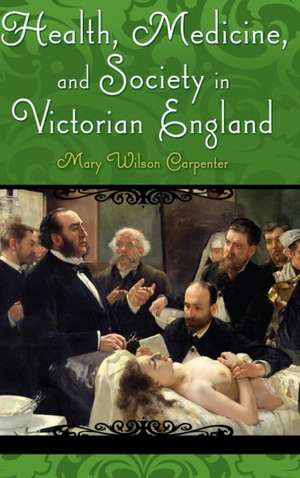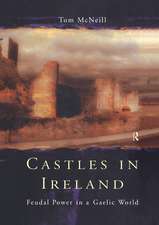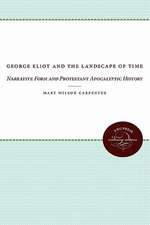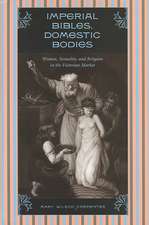Health, Medicine, and Society in Victorian England: Victorian Life and Times
Autor Mary Wilson Carpenteren Limba Engleză Hardback – 18 noi 2009 – vârsta până la 17 ani
Preț: 308.44 lei
Preț vechi: 358.75 lei
-14% Nou
Puncte Express: 463
Preț estimativ în valută:
59.04€ • 64.15$ • 49.62£
59.04€ • 64.15$ • 49.62£
Carte tipărită la comandă
Livrare economică 21 aprilie-05 mai
Preluare comenzi: 021 569.72.76
Specificații
ISBN-13: 9780275989521
ISBN-10: 0275989526
Pagini: 236
Ilustrații: 5 bw illus
Dimensiuni: 156 x 235 x 28 mm
Greutate: 0.52 kg
Editura: Bloomsbury Publishing
Colecția Praeger
Seria Victorian Life and Times
Locul publicării:New York, United States
ISBN-10: 0275989526
Pagini: 236
Ilustrații: 5 bw illus
Dimensiuni: 156 x 235 x 28 mm
Greutate: 0.52 kg
Editura: Bloomsbury Publishing
Colecția Praeger
Seria Victorian Life and Times
Locul publicării:New York, United States
Caracteristici
Includes illustrations in every chapter, such as images from 19th-century medical textbooks, magazine cartoons, portraits, and paintings
Notă biografică
Mary Wilson Carpenter is professor emerita of the Department of English at Queen's University in Kingston, ON.
Recenzii
A book that is a pleasure to read and that provides a well-informed, wide-ranging, and intelligent social history of medicine for the general or student reader. . . . An elegant and able introduction to the ways in which several significant diseases, blindness and deafness, the experience of illness, and the medical profession writ large operated in, affected, and were shaped by the culture and politics of the nineteenth-century British Empire. Like the best of such books, it also provides a useful starting point for the Victorianist seeking information about particular health issues-or pubic health in general.
In a volume in a series designed to give a more accurate picture of life in the Victorian era, Carpenter (emeritus, English, Queen's U., Kingston, Ontario, Canada) presents a sociocultural history of evolving 19th century medicine in the UK interwoven with period medical and literary writing. Among the themes discussed are attitudes and practices toward: women as patients; tuberculosis, venereal, and other diseases; education of the handicapped (deaf and dumb, blind); and especially timely, vaccination. The book includes a public health chronology, glossary, and period medical illustrations.
. a welcome addition to a field not abundantly stocked with short, relatively inexpensive texts and will be useful for undergraduates beginning their study of the subject. It is elegantly written, and Carpenter's use of literary sources broadens the appeal of the subject to students in other disciplines approaching the history of medicine for the first time.
In a volume in a series designed to give a more accurate picture of life in the Victorian era, Carpenter (emeritus, English, Queen's U., Kingston, Ontario, Canada) presents a sociocultural history of evolving 19th century medicine in the UK interwoven with period medical and literary writing. Among the themes discussed are attitudes and practices toward: women as patients; tuberculosis, venereal, and other diseases; education of the handicapped (deaf and dumb, blind); and especially timely, vaccination. The book includes a public health chronology, glossary, and period medical illustrations.
. a welcome addition to a field not abundantly stocked with short, relatively inexpensive texts and will be useful for undergraduates beginning their study of the subject. It is elegantly written, and Carpenter's use of literary sources broadens the appeal of the subject to students in other disciplines approaching the history of medicine for the first time.




























